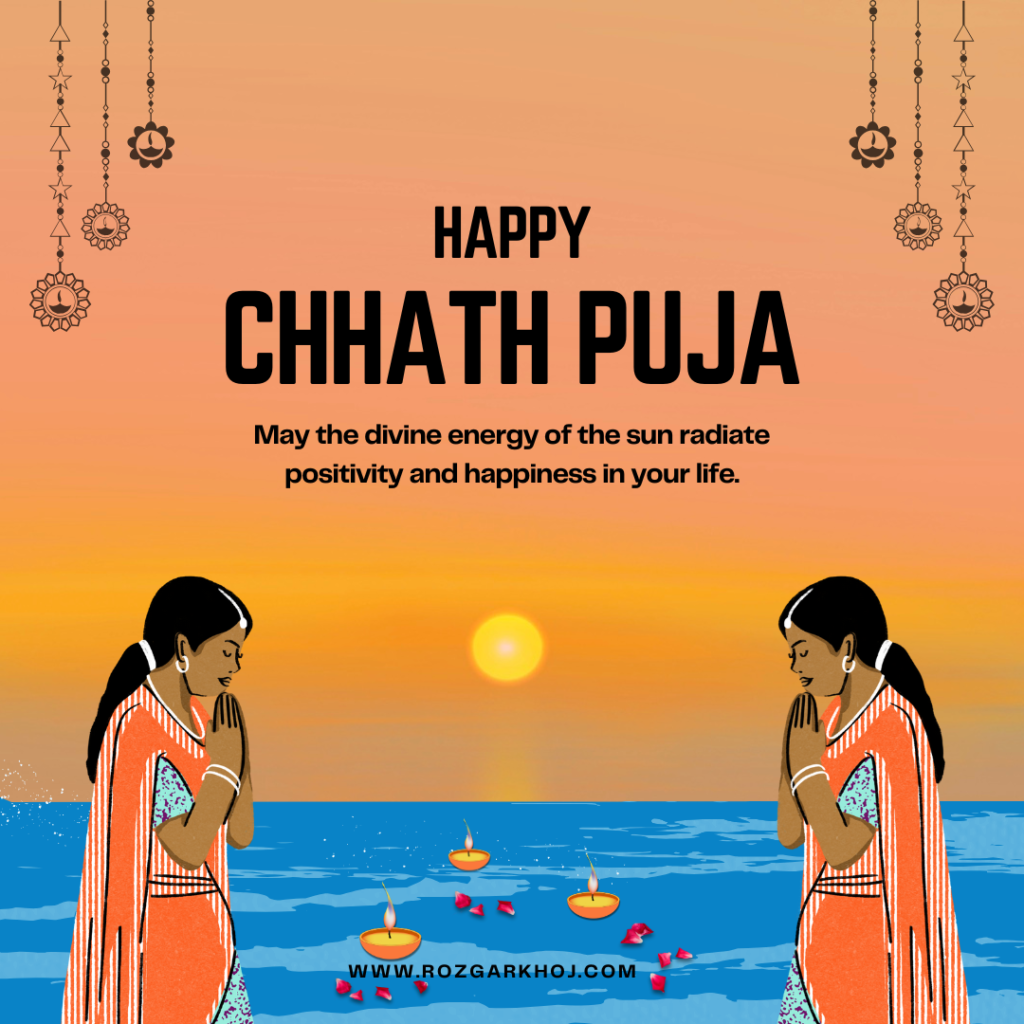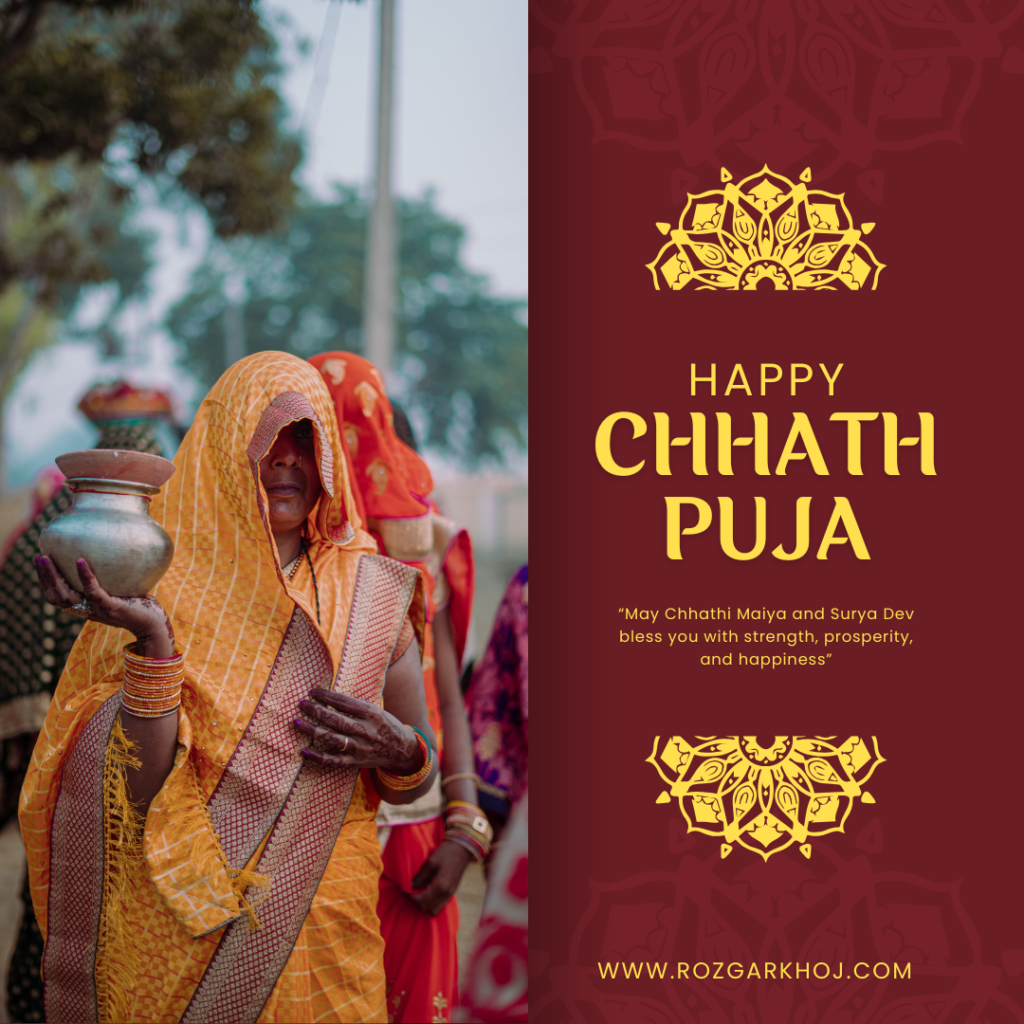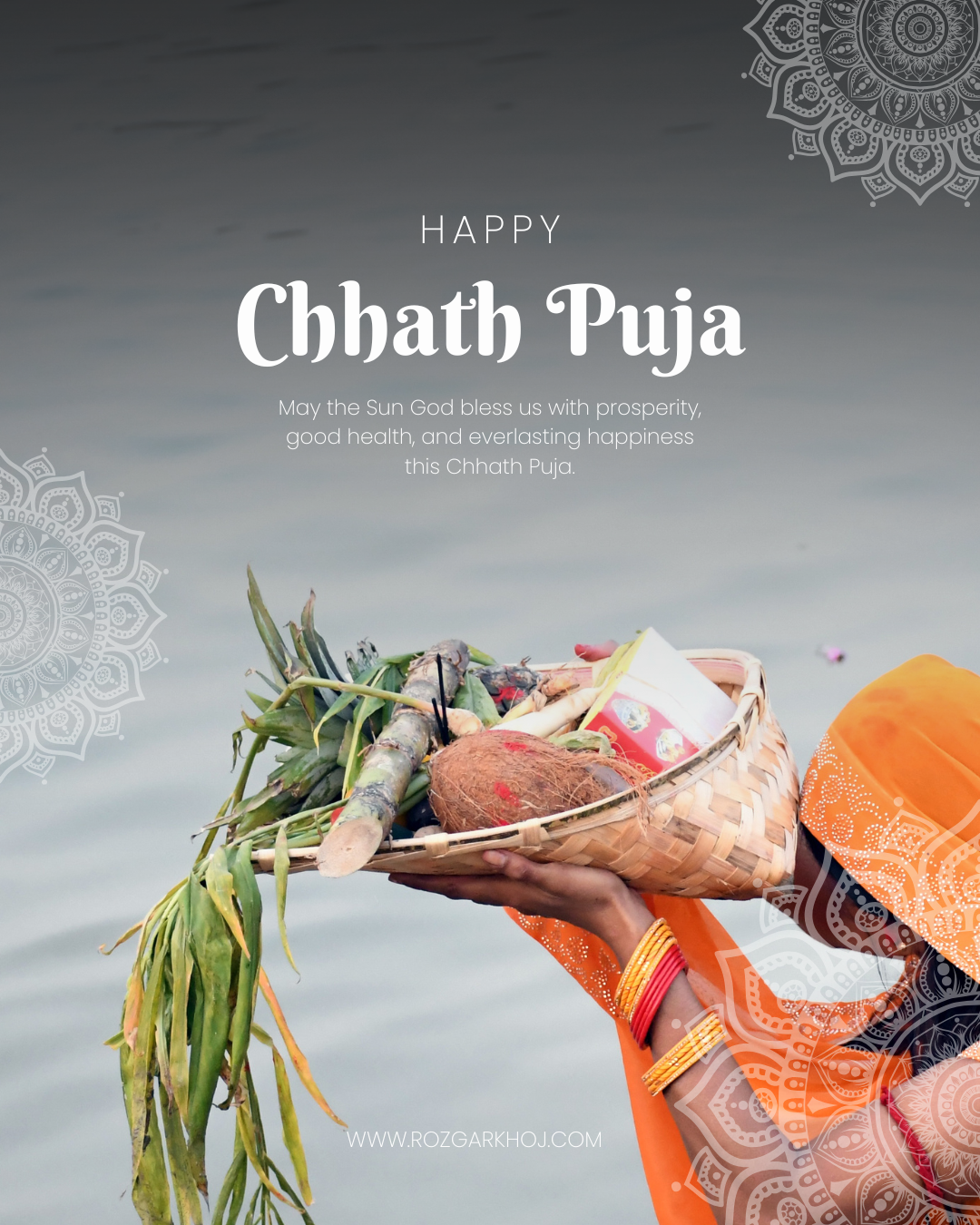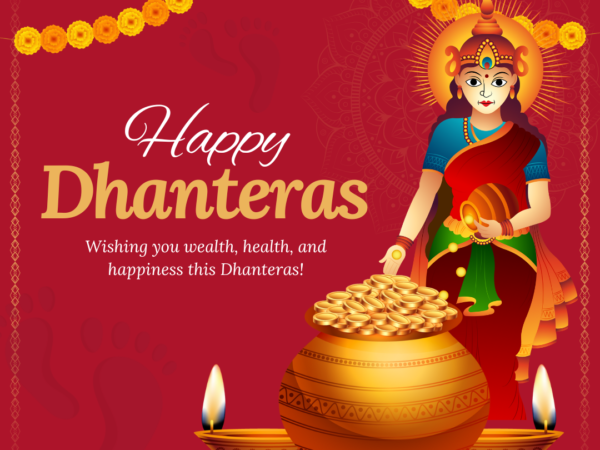Introduction
Chhath Puja, one of the most ancient and significant Hindu festivals, is a beautiful tribute to the Sun God (Surya Dev) and Chhathi Maiya, the goddess who represents the power of the Sun and nurtures life on Earth. Observed mainly in the Indian states of Bihar, Jharkhand, Uttar Pradesh, and the Terai region of Nepal, this festival holds deep spiritual, cultural, and environmental importance.
In 2025, Chhath Puja will be celebrated with grandeur and devotion across India, continuing its legacy of purity, gratitude, and connection to nature.
Dates of Chhath Puja 2025
Chhath Puja is celebrated over four days, typically in the month of Kartik (October–November), just a few days after Diwali.
In 2025, the festival will be observed as follows:
- Day 1: Nahay Khay – Monday, October 27, 2025
- Day 2: Kharna (Lohanda) – Tuesday, October 28, 2025
- Day 3: Sandhya Arghya (Evening Offering) – Wednesday, October 29, 2025
- Day 4: Usha Arghya (Morning Offering) – Thursday, October 30, 2025
Each day of Chhath Puja holds deep symbolism and is celebrated with specific rituals that purify the body and soul.

Historical and Mythological Significance
Chhath Puja finds its mention in ancient Hindu scriptures and epics like the Rigveda and the Mahabharata. The ritual of offering Arghya (water offerings) to the rising and setting sun is said to date back thousands of years.
- Connection to the Mahabharata:
It is believed that Kunti and Draupadi performed Chhath Puja rituals to please the Sun God. Draupadi, blessed by Surya, performed the puja to restore health, wealth, and prosperity to the Pandavas. - Surya Dev and Karna:
Another legend tells that Karna, the son of Surya and Kunti, was a great devotee of the Sun God. His worship rituals are said to have inspired the Chhath Puja traditions that continue today.
These ancient references show that Chhath Puja is not merely a regional festival but a profound expression of gratitude to the life-giving Sun.
Spiritual and Environmental Importance
The Sun is the eternal source of energy and life on Earth. Through Chhath Puja, devotees acknowledge this vital connection between humans and nature.
The festival teaches the values of simplicity, purity, and harmony with natural elements — water, sunlight, air, and earth.
The rituals emphasize cleanliness, self-discipline, and environmental respect. The use of natural materials like bamboo baskets, earthen lamps (diya), fruits, and sugarcane reflects an eco-friendly tradition that has been sustained for centuries.

The Four Days of Chhath Puja
1. Nahay Khay – The Day of Purification
The first day marks the beginning of Chhath Puja. Devotees, especially women known as Vratis, take a holy dip in rivers or ponds and bring the sacred water home to prepare food.
The meal, usually comprising lauki-bhaat (bottle gourd and rice), is cooked in a pure environment without garlic, onion, or salt. This act signifies physical and spiritual cleansing, preparing devotees for the upcoming fast.
2. Kharna – The Day of Fasting and Offering
On the second day, devotees observe a strict fast from sunrise to sunset without even consuming water.
In the evening, after worshipping the Sun God, they break the fast with gur ki kheer (sweet rice pudding made with jaggery and milk), fruits, and chapatis smeared with ghee. This offering is then distributed as prasad among family and friends.
After Kharna, devotees begin a 36-hour nirjala vrat — a fast without food or water.
3. Sandhya Arghya – Evening Offerings to the Setting Sun
The third day is the most spectacular. Devotees, dressed in traditional attire, gather on riverbanks or ponds with their families to offer Arghya to the setting sun.
Women stand waist-deep in water holding bamboo baskets filled with thekua, fruits, sugarcane, coconuts, and soop (winnowing fan) as they sing devotional songs.
The serene sight of thousands of lamps floating on the water during Sandhya Arghya creates an atmosphere of divine energy and peace.
4. Usha Arghya – Morning Offerings to the Rising Sun
The final day begins before dawn as devotees offer Usha Arghya to the rising sun. This marks the end of their long fast.
The rising sun is seen as a symbol of hope, new beginnings, and blessings for health and prosperity.
After the offering, devotees break their fast by eating prasad and seeking the blessings of elders. Families and communities come together in joy, marking the conclusion of this divine celebration.
Rituals and Customs
- Fasting and Purity: Devotees maintain utmost purity throughout the ritual. They sleep on the floor, avoid impure food, and follow strict discipline.
- Prasad Preparation: Thekua, a sweet made from wheat flour, ghee, and jaggery, is the most important offering. Other offerings include rice laddoos, bananas, coconuts, and sugarcane.
- Eco-Friendly Celebration: All rituals are performed using natural items, ensuring that the festival remains environmentally conscious and sustainable.
- Folk Music and Devotional Songs: Traditional Chhath Geet (folk songs) are sung in Maithili and Bhojpuri languages, expressing love, devotion, and cultural pride.
Chhath Puja in Different Regions
While Bihar remains the heartland of Chhath Puja, its celebration has spread far and wide. In Uttar Pradesh, Jharkhand, Odisha, West Bengal, Delhi, and Mumbai, devotees gather near rivers like the Yamuna, Ganga, and Mahanadi to perform the rituals.
Even in countries like Nepal, Mauritius, Fiji, and Trinidad & Tobago, Indian communities celebrate Chhath Puja with the same enthusiasm, keeping their traditions alive overseas.
Chhath Puja in Modern Times
Modernization has not diluted the spirit of Chhath Puja; instead, it has given it a wider platform.
Urban areas have begun organizing artificial ponds and eco-friendly setups for devotees who cannot access rivers. Governments and local authorities arrange safety measures, clean ghats, and manage crowd control to ensure smooth celebrations.
Social media has also played a role in spreading awareness, helping people reconnect with their cultural roots even in cities far from home.

The Symbolism of the Sun in Chhath Puja
The Sun symbolizes energy, prosperity, and healing. Offering Arghya to the rising and setting sun represents balance — acknowledging both beginnings and endings, light and shadow.
In spiritual terms, it teaches the philosophy of equilibrium — to respect both joy and hardship as part of life’s cycle.
Chhath Puja: A Festival of Faith, Family, and Unity
Chhath Puja is not just a religious observance but a celebration of togetherness. Families reunite, rivers become gathering points of devotion, and entire communities come together to maintain tradition.
The sight of devotees, regardless of social class, offering prayers side by side in rivers, reflects the festival’s message of equality and unity.
Conclusion
Chhath Puja 2025 will once again light up ghats and hearts across India and the world with faith, purity, and devotion.
It is a festival that bridges the past and present — connecting people to their roots while reminding humanity of the importance of respecting nature and expressing gratitude.
As the golden sun rises and sets over rivers, devotees will bow in reverence, thanking Surya Dev for his eternal light and blessings.




